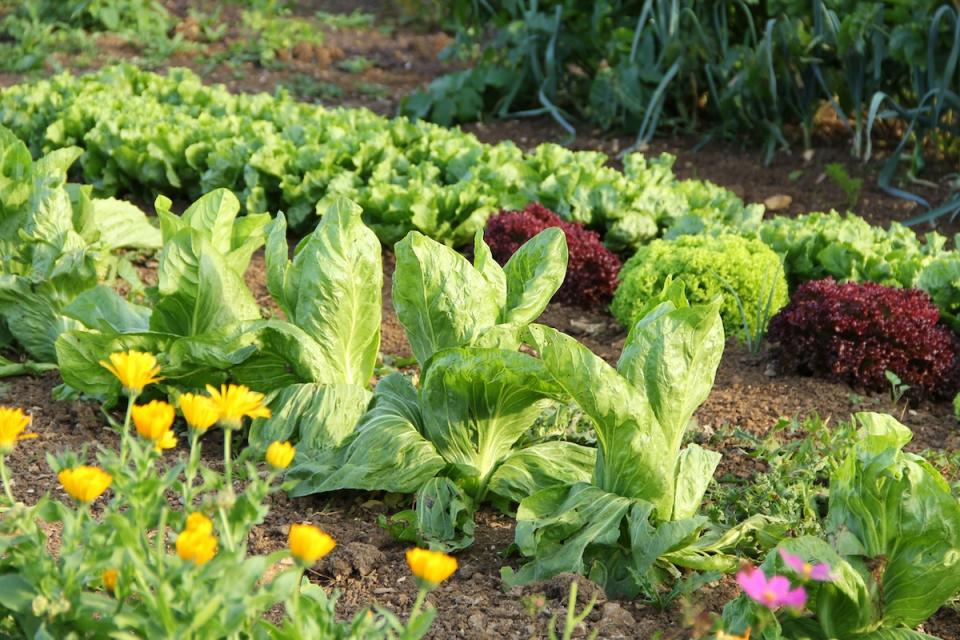Weed-Free Gardening: 7 Tips to Get Weeds Under Control for Good
We may earn revenue from the products available on this page and participate in affiliate programs. Learn More ?

With their sturdy roots and rapid growth, weeds create a lot of extra work for gardeners and they also compete with desirable plants for soil space, water, and nutrients. Even worse, empty garden soil can harbor weed seeds that sprout quickly with the slightest soil disturbance or a bit of spring rain. However, with the right tools, strategies, and some consistency, you can get ahead of weedy problems and grow a naturally weed-free garden without much effort. If you’re tired of hand-pulling weeds, these garden weed control tips will teach you how to prevent weeds from growing, reduce weed seeds, and grow healthier plants—all without chemical herbicides. 1. Practice no-dig gardening. Photo: istockphoto.com Disturbing garden soil unintentionally sows weed seeds, so one of the best ways to get ahead of weed problems is to practice no-dig gardening. Rather than tilling garden beds every year, start building your soil from the top down by adding a fresh layer of compost or aged manure every spring or fall, and experiment with lasagna gardening, too. You may also want to install garden walkways to limit soil compaction and further reduce the need for tilling. 2. Add mulch. Photo: istockphoto.com Mulching garden beds once a year keeps soil well covered and makes it much harder for weed seeds to sprout. Straw mulch or chopped autumn leaves are excellent choices for vegetable beds, while wood chips, bark mulch, and other natural mulches are some of the best choices for flower gardens. Mulch layers that are between 1 inch and 3 inches deep will suppress most weeds, but make sure to leave a “well” of non-mulched space a few inches in diameter to keep plant stems from rotting beneath damp mulch. 3. Install a drip irrigation system. Photo: istockphoto.com Sprinkler systems and garden hoses can actually promote weed growth by watering the empty soil around garden plants where weed seeds may be slumbering. However, if you swap out your garden hose for a drip irrigation system, you can water plants more precisely and limit the amount of water weeds receive. Over time, drip irrigation can reduce the amount of weeds in your garden, but it will also limit water waste and help to combat common leaf diseases, like powdery and downy mildew. 4. Use weed barriers. Photo: istockphoto.com If you’re installing a new garden bed or walkway, lay down weed-barrier fabric or several sheets of cardboard or newspaper before you layer on your garden soil or mulch. This will keep weed seeds from growing and help you avoid the headache of pulling weeds out of your new veggie bed or garden path. Just avoid using plastic weed barriers as these products can degrade over time and create a tangled mess of plastic strings in your soil. Biodegradable products such as cardboard naturally break down into the soil and don’t need to be removed later on. 5. Fertilize carefully. Photo: istockphoto.com Just as sprinkler systems and hoses can promote weeds by watering empty soil, fertilizing empty soil can also cause weeds to grow more vigorously. To avoid issues, be precise with fertilizer applications and apply fertilizer as close to your target plants as possible. This will ensure that unwanted weeds aren’t inadvertently benefiting from your hard work, and you can reduce fertilizer waste as well. 6. Grow ground covers. Photo: istockphoto.com As the old saying goes, “nature abhors a vacuum,” and empty garden soil will invite weed seeds to creep right on in. Keeping your soil covered with mulch is one way to prevent weed growth, but you can also limit weeds by growing low-maintenance ground covers and sowing plants as closely together as their space requirements allow. If you want to keep flower beds super low maintenance, look for native ground covers that will do well in your area. Scented ground covers, like creeping thyme, can be a fun and edible choice! 7. Weed gently. Photo: istockphoto.com No-dig gardening, mulching, and drip irrigation lines will naturally reduce the number of weeds in your garden, but you’ll still need to do a bit of weeding from time to time. To avoid disturbing garden soil, weed as gently as possible and use handy tools like a hori-hori to dig out weed roots so they don’t regrow. Remember to tackle weeds before they go to seed, and be consistent with your weeding efforts. Over time, you should notice fewer and fewer weeds in your garden and you’ll be able to pull up the weeds that do sprout with minimal effort.